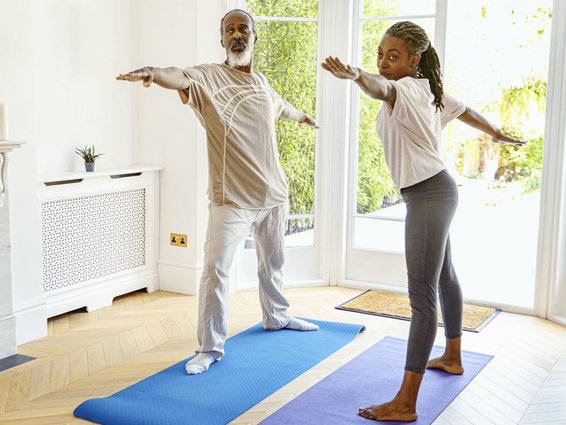
5 Ways to Maintain Bone Health While Aging
Osteoporosis is a disease many older adults face, so maintaining bone health gets more important as you age. Here are 5 tips to maintain strong, healthy bones.
A whopping 10 million people in the United States who are age 50 and older suffer from osteoporosis, and another nearly 44 million have low bone mass, putting them at serious risk for breaking bones from minor falls or bumps.
While osteoporosis is extremely common in older adults, the disease is not an inevitable consequence of aging. It’s never too late to start taking steps to improve bone health. Here are a few ways to start.
Review Your Risk Factors
Age is the number one predictor of osteoporosis, as it’s most common in adults over age 50. Women are also more likely to get osteoporosis than men. Other risk factors for osteoporosis include body size, race, a family history of the disease, and lifestyle factors such as smoking, inactivity, and an unhealthy diet low in calcium and vitamin D. Talk with your doctor about your risk factors and work with them to find ways to protect your bones as you age.
Eat Foods With Plenty of Calcium
It’s important to incorporate foods that are high in calcium, such as dairy products (milk, yogurt and cheese) and green vegetables (collard greens, broccoli rabe, kale), into your diet to support bone health. If you’re not consuming these foods on a regular basis, ask your doctor about a calcium supplement to meet the recommended daily intake. Vitamin D, which helps your body absorb calcium, is also a key nutrient. Vitamin D is not found in many foods, so consider taking a supplement to ensure you’re getting the recommended amount.
Exercise Often
No matter your age, regular physical activity is essential in maintaining bone health, preventing bone loss, and increasing muscle strength. The Centers for Disease Control and Prevention recommends that adults age 65 and up get at least 150 minutes of moderate-intensity aerobic activity each week (30 minutes a day, 5 days a week, for example). Weight-bearing exercise—like walking, jogging, dancing, even gardening—is particularly important to improve bone health. Be sure to consult with your doctor before starting a new exercise plan.
Look Out for Signs of Osteoporosis
In addition to risk factors, some symptoms and signs that hint at weakened bones include:
- Loss of height over a period of time
- Back pain, caused by a fracture
- Poor/stooped posture
- Bone fractures that occur easily
Oftentimes people don't connect the dots between a broken bone or fracture and osteoporosis. As a patient, it’s crucial to speak up to your doctor and advocate for yourself if you think you could have osteoporosis or low bone density.
Get Screened
The National Osteoporosis Foundation recommends a bone density test for all women age 65 and older, and all men over age 70. However, if you have additional risk factors, talk to your doctor about getting tested earlier to learn more about your bone density and risk. For patients that qualify, insurance companies and Medicare plans typically cover the test.
It can be easy to forget about or push aside conditions that affect us as we get older, especially those that are not showing obvious warning signs. Osteoporosis, often called a “silent disease” for its lack of symptoms, is just one of the many conditions that should be top-of-mind as we get older.
This article was medically reviewed by Dr. Kumar Dharmarajan
Published on 5/25/22
Photo credit: iStock


